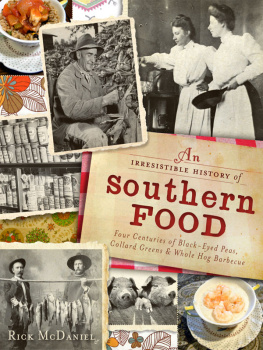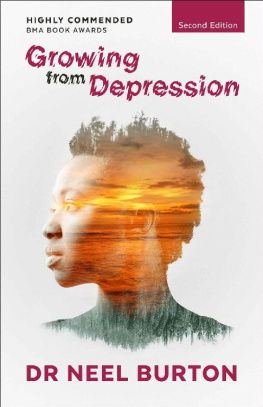Buttermilk
Growing Up on a Sandhill Subsistence Farm
in Louisiana during the Great Depression
Thomas Ard Sylvest

AuthorHouse
1663 Liberty Drive
Bloomington, IN 47403
www.authorhouse.com
Phone: 1 (800) 839-8640
2015 Thomas Ard Sylvest. All rights reserved.
Cover art by Thomas Sylvest Jr
Edited by Paul J. Sylvest and Thomas Sylvest, Jr.
No part of this book may be reproduced, stored in a retrieval system, or transmitted by any means without the written permission of the author.
Published by AuthorHouse 12/03/2015
ISBN: 978-1-5049-6603-0 (sc)
ISBN: 978-1-5049-6612-2 (e)
Library of Congress Control Number: 2015919908
Any people depicted in stock imagery provided by Thinkstock are models,
and such images are being used for illustrative purposes only.
Certain stock imagery Thinkstock.
Because of the dynamic nature of the Internet, any web addresses or links contained in this book may have changed since publication and may no longer be valid. The views expressed in this work are solely those of the author and do not necessarily reflect the views of the publisher, and the publisher hereby disclaims any responsibility for them.
Table of Contents
In my earlier books about growing up on a subsistence farm in Louisiana during the Great Depression, one entitled Collard Greens and the other Cornbread, I recounted mostly from memory stories of events that took place near Provencal, Louisiana in Natchitoches Parish. I began writing these memoirs because my seven children asked me to write down some of the stories I told them of my childhood. After they received some of the stories via e-mail some of my offspring insisted that I collect some of these stories and have then published. The result was Collard Greens, self-published by me through AuthorHouse in 2008.
Collard Greens was well-received. Many folks who enjoyed Collard Greens later asked questions about the conditions of that time and other experiences I had during the Great Depression years, topics I had not included in Collard Greens.
Once again, my children encouraged me to continue writing the stories for the world. And so, I did. The result was my second book, Cornbread, self-published by me at AuthorHouse in 2012.
I am now confronted with the same kind of requests to write more.
We shall see what the resulting product may be. I am calling this third installment Buttermilk.
Thomas Ard Sylvest 2/15/2013
A description of the setting within which my stories occurred is warranted. This may help you understand the circumstances of those times in the 1920s and 1930s during the Great Depression.
During the Great Depression, poverty and unemployment represented the most common conditions of people living in the sand hills of Natchitoches Parish. This was true throughout the South including Appalachia. These two economic and social conditions require some explanation.
I learned in fourth-grade Geography that over half of the population of the United States lived under rural conditions in 1930. About 1937, I heard one of Franklin D. Roosevelts fireside chats over John I. Foshees radio. I learned that half of the working population was described as unemployed.
What was defined as rural?
My definition is simply what I remember. Rural people did not live in town. People were rural if they lived where the land available to them was enough for them to engage in growing much of their food and caring for their livestock such as chickens, pigs, cows, and horses. Most of them did not have running water in their homes. Few had electricity.
To me, a common denominator for rural living was the family cow for production of milk and butter consumed at home. If you kept a cow and produced your own milk and butter then you were rural. The inevitable residual of churning cream to make and remove the butter was the buttermilk. Hence, the title of this book, Buttermilk.
If buttermilk was produced by your family, you were rural. However, there was some ambiguity in using this as the definition of rural. Someone could live in town and own or rent land outside of town to keep a milk cow and grow a few crops. At the end of a workday, these folks could return to town after they attended to their rural land if it was within walking distance.
Unemployment needs to be more specifically defined also given my experience. The definition used by the government in the twenty-first century is not adequate to define such during the great depression. My definition of an unemployed person was an adult who did not own, or control, and farm his own land and was not paid by someone else for working. This definition leaves some ambiguity about the tenant on a farm.
These definitions would not meet the criterion for inclusion in an economics textbook of today. They are just from my memory of them. Hopefully, they will help you understand what I am trying to write.
Unemployed adults were in poverty and dependent upon someone else for sustenance. So were the members of their families. I knew nothing of wealth as an inheritance. I did not live near anyone I knew who had inherited a livelihood.
Against this backdrop we can fill in some more blanks to help make a picture. Family units were typically large. Birth control was not common knowledge nor nearly universally accepted and practiced so the number of births was often as high as ten or more per couple. I am number 11 of the 13 children born to my parents, for example. When I grew up our closest neighbor, who was the same age as my father, had 22 children by two wives.
Not all children lived to adulthood in those years. My parents lost three of their thirteen children during their infancy, three years old or less. The evidence of this historic fact and pattern lies in the cemetery at Provencal, the grave marker of my three infant brothers, and other such grave markers in the other cemeteries of our countryside.
One of the reasons for the deaths of children was that our medical scientists had not yet discovered causes nor remedies for common diseases from infections like pneumonia. Penicillin and antibiotics were not in use, and immunization was in its infancy. Disease causes and controls were often just discovered or still not known such as the connection of mosquitoes with yellow fever and malaria.
Transportation was mostly walking, riding on horseback or in wagons. Some long distance travelers used trains and boats. Airplanes were not yet involved in getting members of the public from city to city. Gasoline and diesel powered automobiles and trucks did not join trains in becoming the leading mode of transporting people, goods and munitions until the twentieth century.
Some people were employed in that they were trying to grow food on owned or rented land. Such activity did not produce enough product nor a market for it which could give the worker and his family the additional necessities of life, clothing and shelter.
Some of the economic distress which began during the years immediately before the beginning of the 1930s resulted from the greatest and most devastating flood in the history of the United States known as the flood of 1927. Additional stress occurred with the stock market crash of 1929. The credit and banking systems seemed to cease to function.
To help provide a bit of historic backdrop, Herbert Hoover was elected president in 1929 about the same time as the stock market crash. He served until Franklin Roosevelt was elected in 1933. Some of these basic facts I learned from history at school and not from distinct personal memories of their occurrence. I do remember the election of Mr. Roosevelt.
Next page









